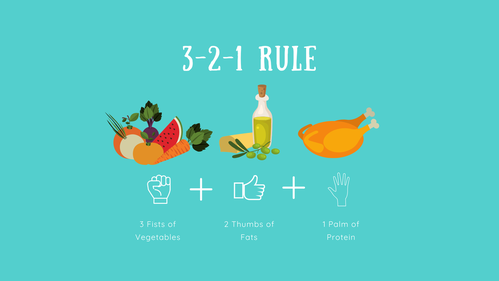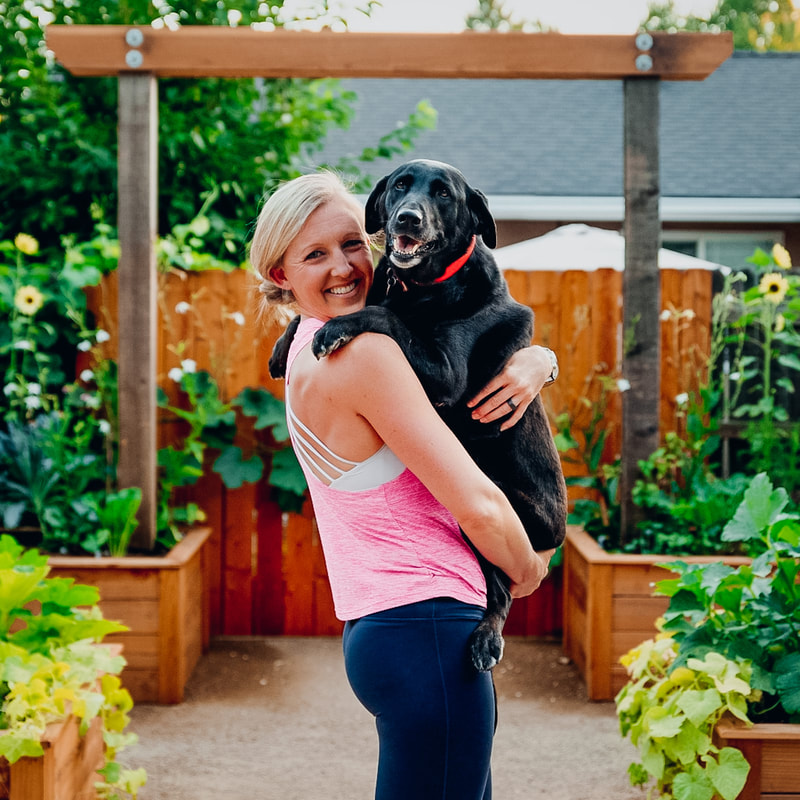|
I want to spend the next few weeks outlining a typical annual nutrition plan (ANP) to correspond with your annual training plan (ATP). In the last blog post, I did a 10,000 foot overview on why you should consider building an ANP and how to get the general skeleton of one designed. For the next few posts, I’m going to dive into the details of each phase from a nutrition perspective so you can start plugging in the details of your plan and TAKE ACTION. Base Phase Nutrition Planning In order to build a successful base phase nutrition plan, one must consider their actual training plan first. The “base phase” is what comes after your “off-season” and before your “build phase”, both of which I will dive into in future blog posts. Not all coaches call this phase “base phase” and most stock plans that an athlete purchases online won’t include one. So getting clear on what the “base phase” is, is important! The base training phase for each athlete is going to look a little bit different depending on their own specific schedule, goals and skills. But generally speaking, and depending on how long your event is (i.e., a sprint triathlon or 5k vs an ironman or marathon) this phase lasts about 8-12 weeks long. You know when your base phase starts by counting backwards from your first key race or event by approximately 24-28 weeks. In this phase, the three main goals are:
NUTRITION FOR BASE PHASE For any athlete who’s primary sport requires them to keep moving for more than 90 minutes, doing a basic low carbohydrate, high fat (LCHF) diet is recommended during the base phase. Ideally you would get yourself into ketosis for a few weeks during this phase. LCHF vs. Ketosis Although some people tend to think they are the same, there is a difference between eating LCHF and getting yourself into ketosis. In fact, there are plenty of people out there who follow a LCHF diet who are NOT in ketosis. And there are some people who can tolerate eating a moderate amount of carbohydrate and still stay in ketosis. So what is the difference? The most notable difference is that a ketogenic diet is actually measurable and is defined by the production of ketones, whereas a LCHF diet is not. A ketogenic diet is one in which your body favors burning fat (over glucose) as a fuel source. The byproduct of burning fat is a ketone body (produced in the liver). These ketones float around in your bloodstream and can be measured by a device similar to a glucometer (such as this one). To create a situation in which your body favors burning fat over burning sugar, you need to follow a clean ketogenic diet, at least initially. But exactly how low carb you go is completely dependent on your body. Some people can get into a state of fat burning and ketone production with 50g of carbs per day, whereas some people need to eat closer to 30g of carbs, and some people can tolerate much more, sometimes upwards of 100+g of carbs per day. It doesn't really matter how many carbohydrates you eat on a ketogenic diet AS LONG AS YOU ARE PRODUCING KETONES (as measured by a ketone monitor!). If you are measuring your level of ketones on a device and seeing a positive reading, then you are burning fat! The device I prefer to use is the Keto Mojo. This device is affordable, quick and accurate. It does however require a prick of the finger for a very small drop of blood. If pricking your finger isn’t your thing, your other option is using a breath ketone meter. However, I will tell you that - as of this posting - I have yet to see the reliability of these meters compared to a blood spot test. image from: fatforweightloss.com You can also purchase urine ketone strips that will tell you if you are excreting ketones in your urine. This can be helpful for the first few days of transitioning your body from a sugar burning state into a fat burning state, but after that, you will get false readings. Why? Because when you first start dropping your carbohydrate intake and your body starts burning fat and producing ketones, the body’s tissues don’t know how to upregulate the ketones. Since the liver is producing them, and the tissues don’t quite know how to use them, they will be excreted through the urine. Eventually, the tissue gives up hope on glucose and starts learning how to use ketones for energy. Once this happens, you should no longer be wasting ketones in your urine which means you will stop seeing positive results on the urine ketone strip. Although this can be frustrating at first, it is a sign that your body is USING the ketones rather than wasting them and this should be celebrated! It is at this point that you need to switch to either a blood spot test or a ketone breath meter to get a more accurate picture of your true ketone level. Why does burning fat matter for endurance athletes? I thought we were supposed to burn carbs! Most of you endurance athletes out there have probably been educated to “carb up” to ensure you have fuel for training and events. So, why should you care about burning fat instead? And, what if you don’t have body fat you want to lose? Both are GREAT questions! The reason why becoming fat adapted (i.e., your body burns fat for fuel) is key is because the more fat your body burns, the less reason you have to obtain your energy from exogenous sources like gels or goos to be able to perform at your peak. The body can only store approximately 1,400 - 2,000 calories worth of carbohydrate. That means that you only have about 90 minutes worth of energy stored as sugar in your liver and muscles. So if your event is going to last longer than that, you will need to get more energy from somewhere! And that somewhere is typically gels and goos! It may seem harmless, and sure they give you “energy” but many of us also struggle with GI distress due to our consumption of these so-called “foods”. On top of that, when we eat anything, our body shunts blood away from other areas of your body (i.e., working muscles!) so that it can focus on digesting. That means you are taking away precious energy from the muscles you are using to crush your event! On the other hand, even a lean athletic body has approximately 50,000 - 80,000 calories stored as fat! The FASTER study, published in 2012, showed that after 20 months of following a LCHF diet, ultra endurance runners had a fat oxidation rate (i.e., the rate at which your body burns fat for fuel) that was 2.3x higher than that of the standard high carb athletes. And when you consider that fat has twice as much energy available than carbohydrates (and protein), I’ll take fat burning over sugar burning for low intensity exercise ANY DAY! So how does that actually look in your kitchen and while you are training? IN THE KITCHEN You can make this as complicated or as simple as you want to make it. Let’s start with simple which is my “3-2-1 Rule”. Depending on your caloric needs, you would build a plate that includes 3 servings of high fiber, non-starchy carbs (such as dark leafy greens, cucumbers, broccoli, artichokes, bell peppers, etc.), 2 servings of healthy fats (such as avocados, nuts/nut butters, oils, and fats included in protein you eat), and 1 serving of quality protein! 1 cup of high fiber, non-starchy carb = 1 serving 1 tablespoon or the size of your thumb = 1 serving of fat The size of your palm = 1 serving of protein I highly recommend that you work towards eating most of your meals in an 8 hour window and avoiding snacking between these meals. That might mean that you eat your first meal at 10am, eat again at 2pm, then your final meal at 6pm. You would then drink nothing but clear liquids (like water, herbal teas and black coffee) from 6pm until 10am the next morning. This gives your body a break from being in the fed state all the time and allows it to tap into stored energy. Since you aren’t eating a lot of carbohydrates in the form of starchy tubers, grains, breads, pastas, fruits or other high sugar foods, your body will start looking at stored fat for energy. Eating within a short eating window will help you get ‘fat adapted’ more quickly. However, you need to be realistic with what your life requires of you because the last thing you want to do is undereat because you are limited to a particular feeding window! It is still important to consume your body’s energy requirements from your daily meals. Tracking Macros On the more detailed side of things, you can actually track your macros using an online program like Cronometer or MyFitnessPal. I think tracking your macros is a fantastic way to learn what you are eating and how much. If you have never done it before, you should! On the contrary to what most people think, what I find is that many of my clients under eat and they don’t learn how little they are actually eating until they start tracking their macros. Under consuming calories on a regular basis is a great way to wreck your metabolism. No one wants that. As informative as tracking may be, it is time consuming and tedious, especially if you are eating food without labels, which I HIGHLY suggest you do! Therefore, my recommendation is to track your macros for a given period of time. I suggest 1-2 weeks which will give you an idea of what you are putting in your mouth, in what ratios, and the types of adjustments you need to be making to meet your energy needs. Macronutrient Ratios During base training, to support your body’s transition to burning fat, I recommend starting out with a macronutrient ratio of 20% protein, 10% carbs, and 70% fat. Fiber is incredibly important to a healthy body, so make sure you are still getting the recommended daily fiber intake of 25-30g daily. Some of my favorite low carb fiber foods are: chia seeds, ground flax meal, marinated artichoke hearts, avocados, nuts and seeds. Remember, you don’t HAVE TO track. You can keep your daily eating simple by just following the 3-2-1 rule with all of your meals! DURING YOUR WORKOUTS Since your base phase is all about building an aerobic (remember, WITH oxygen) endurance base, you shouldn’t be doing any training that gets really intense and you shouldn’t get out of breath for too long! At this lower intensity, you will be hanging out in your fat burning heart rate zone during training. Most of the endurance training sessions in base phase last less than 4 hours in length. If you stay true to this style of training, this will also help you get ‘fat adapted’ more quickly! Since you have plenty of stored body fat, you can also go longer periods of time during training without needing to put in a bunch of calories. For training that is less than 90 minutes long, I recommend sticking with pure water and electrolytes (making sure that the electrolyte mix does NOT have sugar in it). That’s it! A simple way to get electrolytes without all of the other junk found in some drinks, I recommend adding a pinch of unrefined sea salt to your water. As soon as you are done with your training, and you start feeling hungry, go ahead and eat a real food meal that is LCHF. For some people, this is immediately following training. For others, this can be hours after training. The idea here is that you follow your body’s signals on this one. Eat when you are hungry, don’t when you aren't. The exception to this rule is after strength training, in which you should aim to get a real food meal that is rich in a quality protein that has a complete amino acid profile within 1 hour of finishing your training session. If your training is longer than 90 minutes, but less than 4 hours, consider using liquid calories. Something like Tailwind or Skratch Hydration are my suggestions. Both have electrolytes mixed in and offer some carbohydrates to help get you through the longer session. At the 90 minute mark of your session, slowly start consuming the liquid calories. The goal is to SLOWWWW drip in the calories until you finish your session. For most athletes, getting about 100-200 calories in SMALL SIPS per hour is enough! But you are you. You might need to play around with the amount of calories you need to help you get through a session without bonking but not overdoing it either. One great sign to look for that indicates that you might be under eating during training is a rapid decline in both your energy and mood. If your training session was enjoyable and fairly easy, and then all of a sudden it’s not anymore, this is a sign that you are low in calories. Aim to consume a little bit more per hour during your next session. You might be over eating during your training session if you feel full all the time, aren’t eager to eat, or you get kicked out of ketosis and can’t get back in for a few days after training. If you load yourself up on carbohydrates during your base phase training, you can easily knock yourself out of ketosis which defeats the entire goal of becoming a better fat burner. During base training, I recommend starting with less calories per hour and slowly increasing the amount as needed. You can always eat more if you find your energy levels drop, but you can’t take calories away once you’ve eaten them. If your training is longer than 4 hours, it’s likely that you’ve moved in “build phase”, which I will be going into greater detail on in a separate post for stay tuned (and if you’re not already, subscribe to my email list so that you don’t miss it when it comes out!) From Base Phase Training to Build Phase Training
Since the base training phase lasts approximately 8-12 weeks, you should spend the same amount of transitioning your body to burn fat for fuel! In the next post, I am excited to talk in more detail about how to transition from nutrition in base training to nutrition in your build phase. We’re going to hit on how to carb test, carb cycle and how to eat to fuel your harder and longer session. I can’t wait! In the meantime, if you need a step-by-step guide on how to burn more fat during your base phase, download my free ‘5 easy steps to burning fat as fuel’ on my website! REFERENCES:
0 Comments
Leave a Reply. |
AuthorTiana Rockwell is a certified nutritional therapist, avid endurance athlete and dark chocolate lover. She believes that by eating REAL food, we can balance our body and reach optimal health and wellness! Archives
May 2022
Categories
All
|









 RSS Feed
RSS Feed